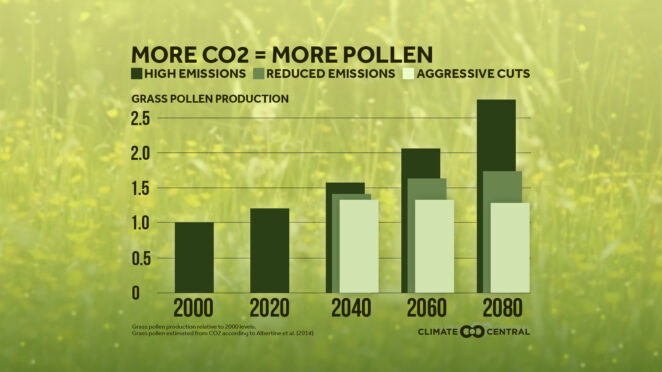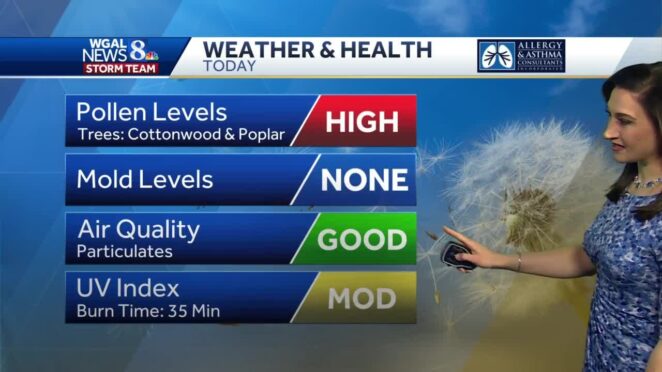As the weather warms up and the days get longer, many people are subject to seasonal allergies. These allergies are triggered by the presence of pollen in the air, and the amount of pollen can vary greatly depending on the time of year and the particular area in which you live. Having access to pollen count data can be extremely helpful in managing your allergies, as it can inform you of when you are likely to experience symptoms and how to best prepare for them.
This blog post will discuss how to use pollen count data to predict and manage seasonal allergies, including tips on how to minimize exposure to pollen and how to treat allergy symptoms. We’ll also discuss the benefits of using pollen count data to stay one step ahead of your allergies. With the right information, you can make sure that you stay healthy and enjoy the spring and summer months.
What is Pollen Count Data?

Pollen count data is a measure of the number of pollen grains in a given volume of air. It is used to measure the amount of pollen present in the atmosphere and can be used to track the pollen levels over a period of time. This data is collected from various sources, including government agencies, universities, and private companies. The data is usually collected on a daily basis, and it can be used to predict the levels of pollen in the air for any given day.
Pollen count data can also be used to assess the severity of allergic reactions, as high pollen levels can trigger adverse symptoms in people with allergies. Additionally, this data can be used to develop strategies to reduce the effects of pollen in the environment, such as planting trees or other vegetation that can reduce the amount of pollen in the air.
How Can Pollen Count Data Help Manage Seasonal Allergies?

Pollen count data is a critical tool for managing seasonal allergies, and staying informed about pollen levels in your area can help you plan and prepare accordingly. By knowing the pollen count, you can anticipate when pollen levels will be highest and take necessary precautions to reduce your exposure to allergens.
For example, if the pollen count is high, you may want to avoid spending time outdoors or keep windows and doors closed to prevent pollen from entering your home. Additionally, you can take measures to minimize your exposure to pollen by wearing a mask while outside, washing your clothes and hair after being outside, and avoiding outdoor activities during peak pollen times.
Furthermore, pollen count data can also help you determine when to take medications to manage your allergy symptoms. If you have a known allergy and are aware that pollen levels will be high, you can take preventive measures such as taking antihistamines or other allergy medications before symptoms start to appear.
In addition, pollen count data can help you track the effectiveness of your allergy management strategies. By monitoring pollen counts and your symptoms over time, you can identify patterns and make adjustments to your allergy management plan as needed.
Overall, pollen count data is an essential tool for managing seasonal allergies. It can help you plan ahead, take preventive measures, and track the effectiveness of your allergy management strategies. By staying informed about pollen levels in your area, you can reduce your exposure to allergens and minimize the severity of your allergy symptoms.
Pollen Count by Zip Code

One of the most convenient ways to access pollen count by zip code. Many websites and apps offer accurate and up-to-date information about the current and forecasted pollen count for specific areas. This means that you can easily check the pollen count in your area and plan ahead by taking the necessary precautions to deal with the pollen levels. Additionally, many of these sites also provide pollen count data for several days in advance, so that you can plan your daily activities accordingly.
How to Use Pollen Count Data
Once you have access to the pollen count in your area, it’s important to know how to use the data to best manage your allergies. Here are some tips:
- Check the pollen count regularly. Checking the pollen count in your area on a regular basis is an important part of staying informed about the pollen levels in your environment. It is recommended to check the pollen count several times a week to ensure that you are aware of any changes in the pollen levels in your area. Knowing the current pollen count can help you plan outdoor activities, as well as help you to be aware of the potential allergies that you may be exposed to. Additionally, if you are sensitive to pollen, checking the pollen count regularly can help you decide when to take any necessary precautions to reduce your exposure.
- Limit outdoor activities. If you suffer from allergies, it is important to pay attention to pollen counts and avoid outdoor activities when they are high. This is especially important during the spring season when pollen counts tend to be at their peak. By avoiding outdoor activities when the pollen count is high, you can help reduce your exposure to allergens and minimize your symptoms. Additionally, it is beneficial to take preventative measures such as wearing a face mask while outdoors and washing your clothing and hair after being outdoors. Taking these precautions can help to reduce your exposure to pollen and other allergens and help you to feel better.
- Wear a mask. Wearing a mask when the pollen count is high is an effective way to reduce the amount of allergens that you are exposed to. Allergens, such as pollen, dust, and pet dander, can trigger allergic reactions, including sneezing, coughing, and itchy eyes. By wearing a mask that covers your nose and mouth, you can reduce the amount of allergens that you are exposed to and minimize the severity of your reactions. Additionally, you should also take steps to reduce your exposure to allergens by avoiding areas with high pollen counts, keeping your windows closed, and regularly cleaning surfaces to remove dust and pet dander.
- Take medication. Taking allergy medication as prescribed is an important step in managing your allergies. Doing so can help reduce the severity of your symptoms and make it easier to go about your daily life. Allergy medications can come in the form of pills, nasal sprays, and inhalers, and your doctor can help you determine which one is right for you. It is important to take your allergy medications as directed and to only use them as prescribed by your doctor. This will ensure that you are receiving the best possible treatment for your allergies and reducing your symptoms. Additionally, you should speak to your doctor if you are experiencing any side effects from the medication or if your symptoms are not improving.
Conclusion

Pollen count data is a valuable resource for anyone suffering from seasonal allergies. By understanding the levels of pollen in your local environment, you can take proactive steps to reduce your exposure to allergens. This information is readily available online, with many websites and apps providing up-to-date pollen count data organized by zip code. By arming yourself with the right information, you can effectively manage your allergies and keep yourself healthy during allergy season.



